Health Care > QUESTIONS & ANSWERS > [Solved] NSG 6435 Week 7 Quiz (All)
[Solved] NSG 6435 Week 7 Quiz
Document Content and Description Below
NSG 6435 Week 7 Quiz NSG6435: Week 7 Quiz Week 7 Quiz Question 1 1 / 1 point A newborn is born with a cleft lip and palate. The provider understands that the slit in the li... p and mouth will introduce specific challenges for the parents and child. How best can a provider manage this condition before its repaired? (select all the apply) Recommend the use of special nipples for feeding Recommend speech therapy in later years. Recommend dental restoration as often needed. Refer to surgeon when indicated Question 2 1 / 1 point Most young children walk on their toes until they establish the heel-toe pattern. This pattern usually develops within the first 6 months of walking. Toe walking can be idiopathic or secondary to a neurologic problem. Since it is important for the provider to differentiate between the causes; what should the provider do to accomplish this? (select all that apply) Look at shoe wear to assess extent of toe walking. Assess the heels for tight cords Conduct a neuro assessment. Measure leg lengths and examine hips. Question 3 1 / 1 point An infant client is positive for moist, beefy-red macules and papules with sharply marked borders and satellite lesions to the diaper area. KOH-treated scrapings of satellite lesions show pseudohyphae. What is the most likely diagnosis? Tinea Miliaria Erythema toxicum Candidiasis Question 4 1 / 1 point A 15-year-old client presents to the clinic c/o tenderness to the right side. The pain started gradually and often radiates to the back. On exam the client is positive for Tietze syndrome. The provider diagnosis the client with Costochondritis. How should the provider treat this condition? (select all that apply) Recommend mild analgesics and NSAIDs Recommend avoiding strenuous activity Take cough suppressants Administer cortisone injections Question 5 1 / 1 point A 6-year-old client presents to the clinic c/o of an intermittent limp and pain to the anterior thigh. Upon exam, the following is noted: antalgic gait with limited hip movement, atrophy of the gluteus, quadriceps, and hamstring muscles; decreased abduction, internal rotation, and extension of the hip and pain on rolling the leg internally. What is the most likely diagnosis? Legg-Calvé-Perthes Disease Osteomyelitis Rheumatoid arthritis Gaucher disease Question 6 1 / 1 point A 9-year-old client in town for the summer presents to the clinic c/o a rash. Upon exam, the following is noted: multiple, annular, scaling, and discrete hypopigmented patches located on the trunk. KOH scrapings of the lesions revealed short curved hyphae and circular spores that fluoresced yellow-orange under the Wood’s lamp. What is the most likely diagnosed? Tinea corporis Tinea manuum Tinea versicolor Tinea capitis Question 7 1 / 1 point A 17-year-old client presents to the clinic c/o of small bumps all over the face. Upon exam, the following is noted: very small, firm, flesh-colored discrete papules 1 to 6 mm in size located to the face, axillae, and trunk. What is the most likely diagnosis? Molluscum contagiosum Condyloma acuminatum Small epidermal cysts Acne vulgaris Question 8 1 / 1 point A 5-year-old client who presents to your clinic is found to have small white oval cases attached tightly to the hair shafts at the back of the head, nape of the neck and eyelashes. What is the best treatment approach? Prescribe Antifungals Prescribe Antiparasitics Prescribe combination medication consisting of Antifungals and Antiparasitics Prescribe medication that follows local resistance patterns Question 9 1 / 1 point A 4-year-old client reports to the clinic with visible scratch marks to the arms. The mother explains that the client is restless, cranky and scratches throughout the day which intensifies at night. On exam, the following is noted: S-shaped burrows in the webs of fingers, sides of hands and forearms. What is the most likely diagnosis and the most appropriate treatment? Scabies; treat with Antiparasitics Insect bites; treat with Antiparasitics Scabies, treat with Antifungals Insect bites; treat with Antifungals Question 10 What are the key clinical signs and symptoms that are characteristic of the disease erythema multiforme? (select all that apply) Lesions of the oral mucosa that are shallow Lesions are fixed, symmetric, and have a typical distribution Lesions initially appear dusky, as red macules or edematous papules. Lesions evolve into target lesions with multiple, concentric rings of color change [Show More]
Last updated: 1 year ago
Preview 1 out of 7 pages
.png)
Buy this document to get the full access instantly
Instant Download Access after purchase
Add to cartInstant download
We Accept:

Reviews( 0 )
$7.00
Document information
Connected school, study & course
About the document
Uploaded On
Feb 07, 2021
Number of pages
7
Written in
Additional information
This document has been written for:
Uploaded
Feb 07, 2021
Downloads
0
Views
24

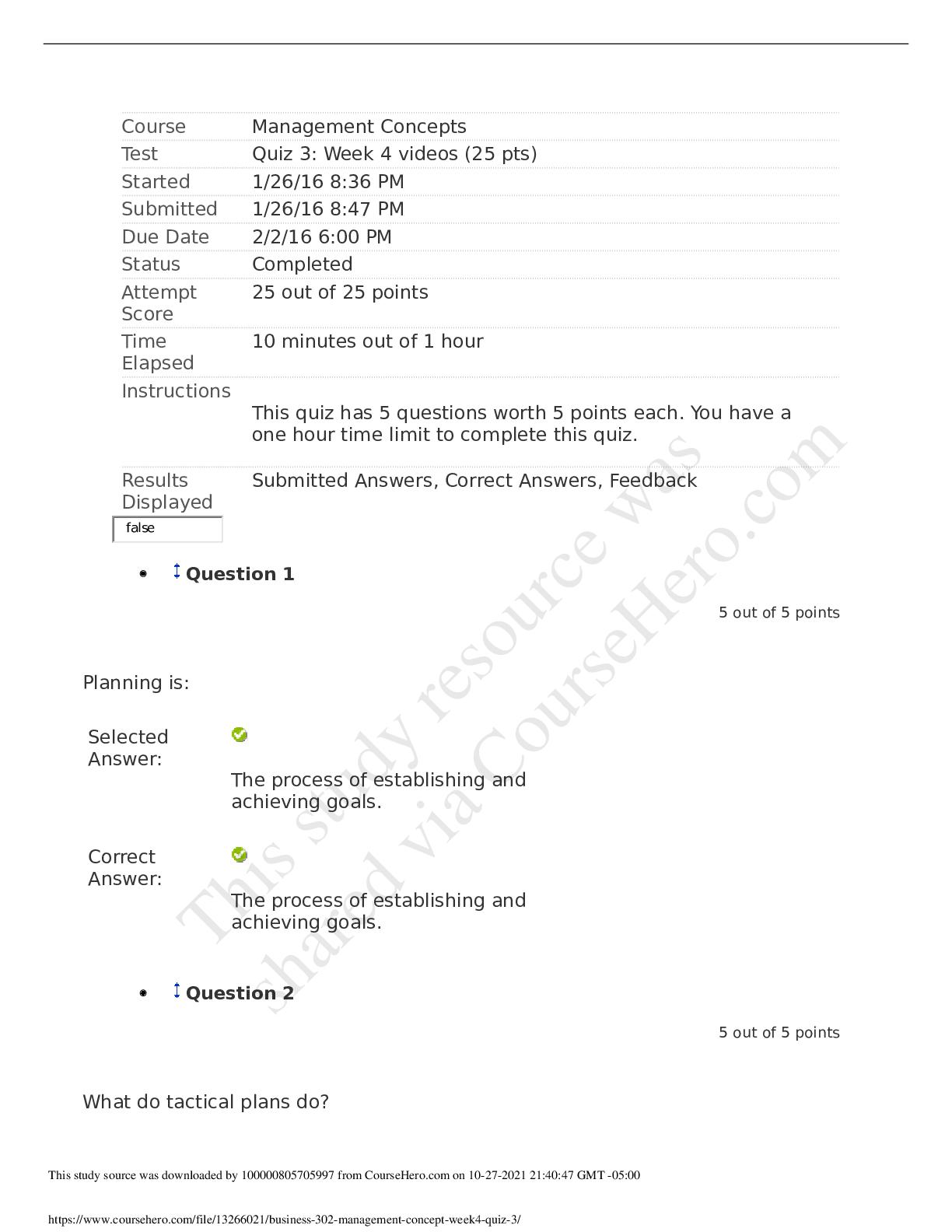

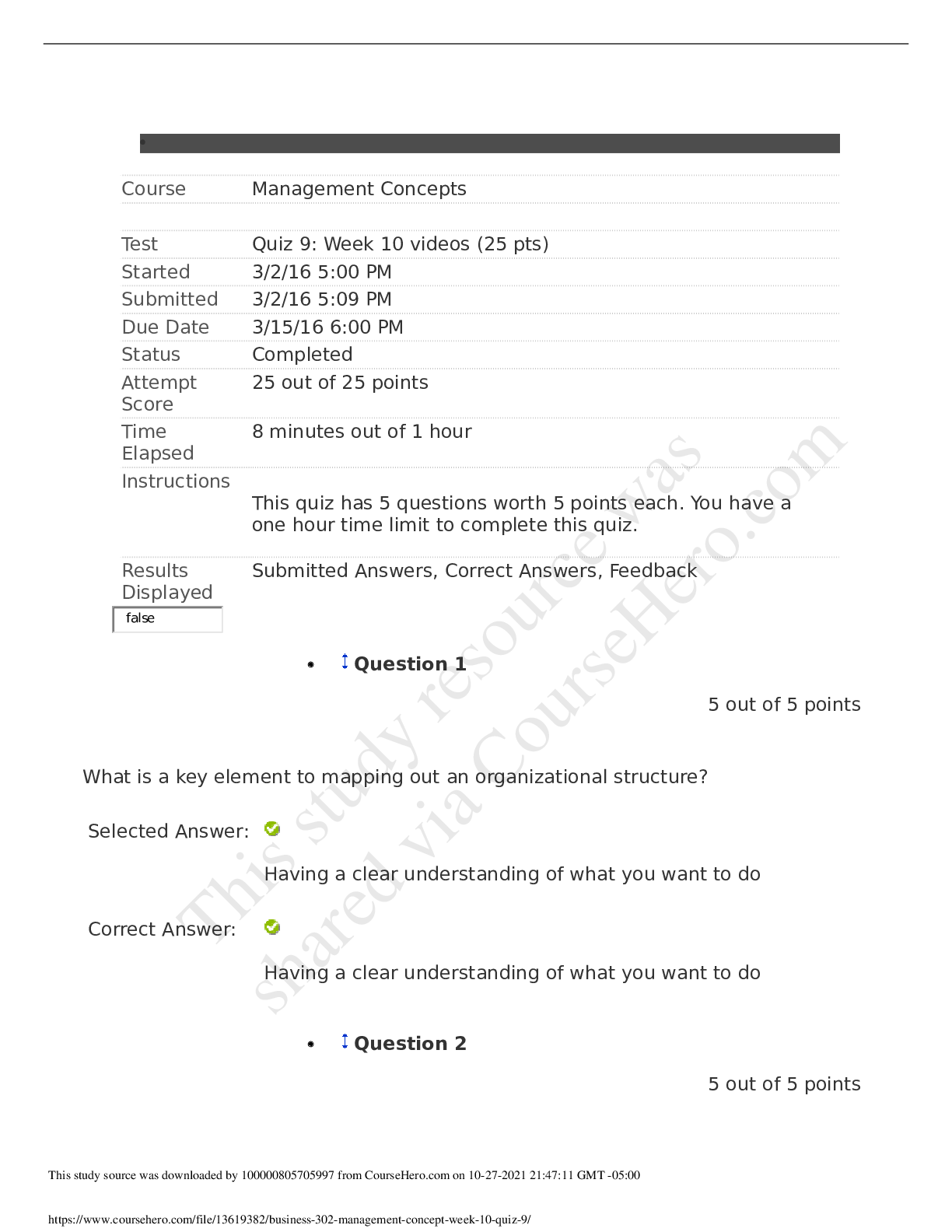

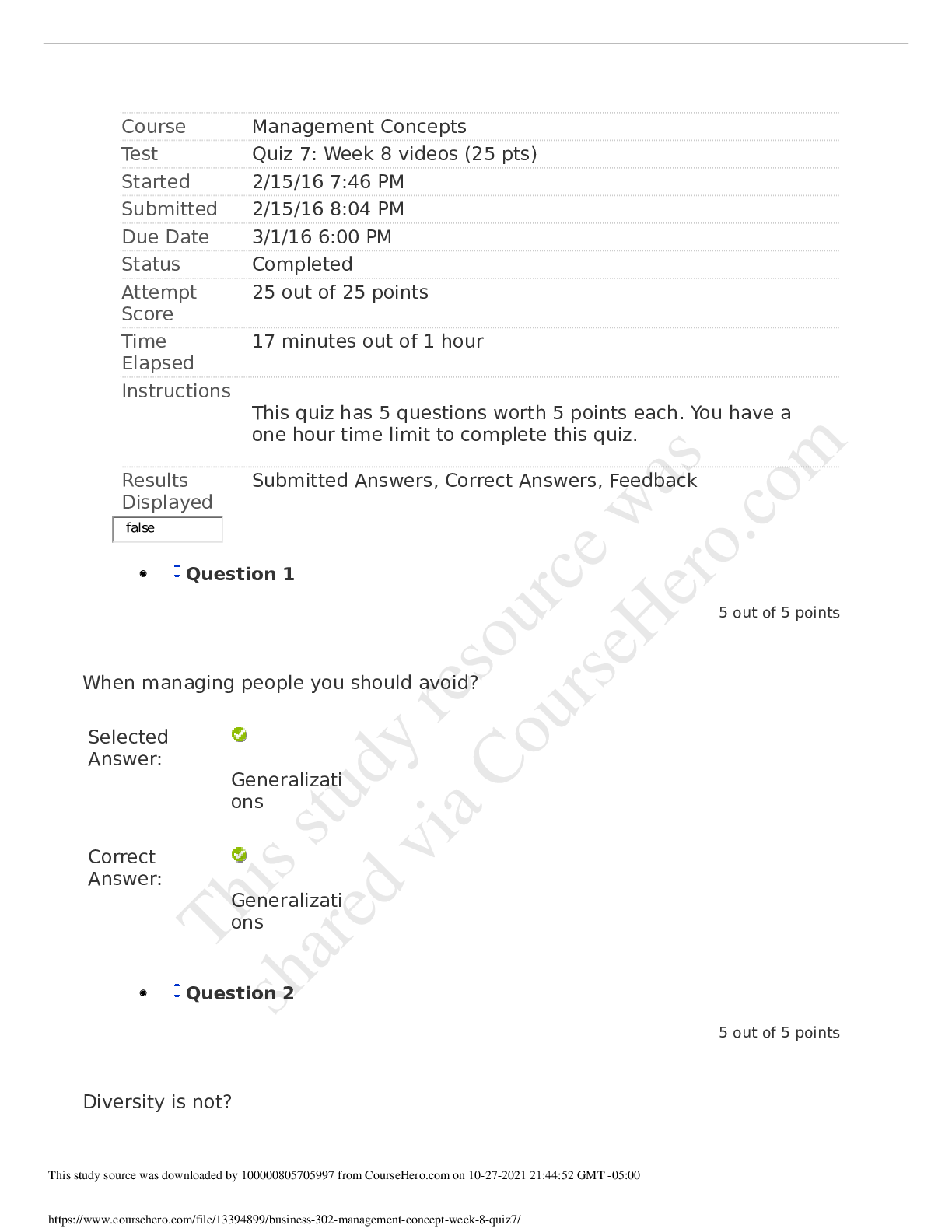

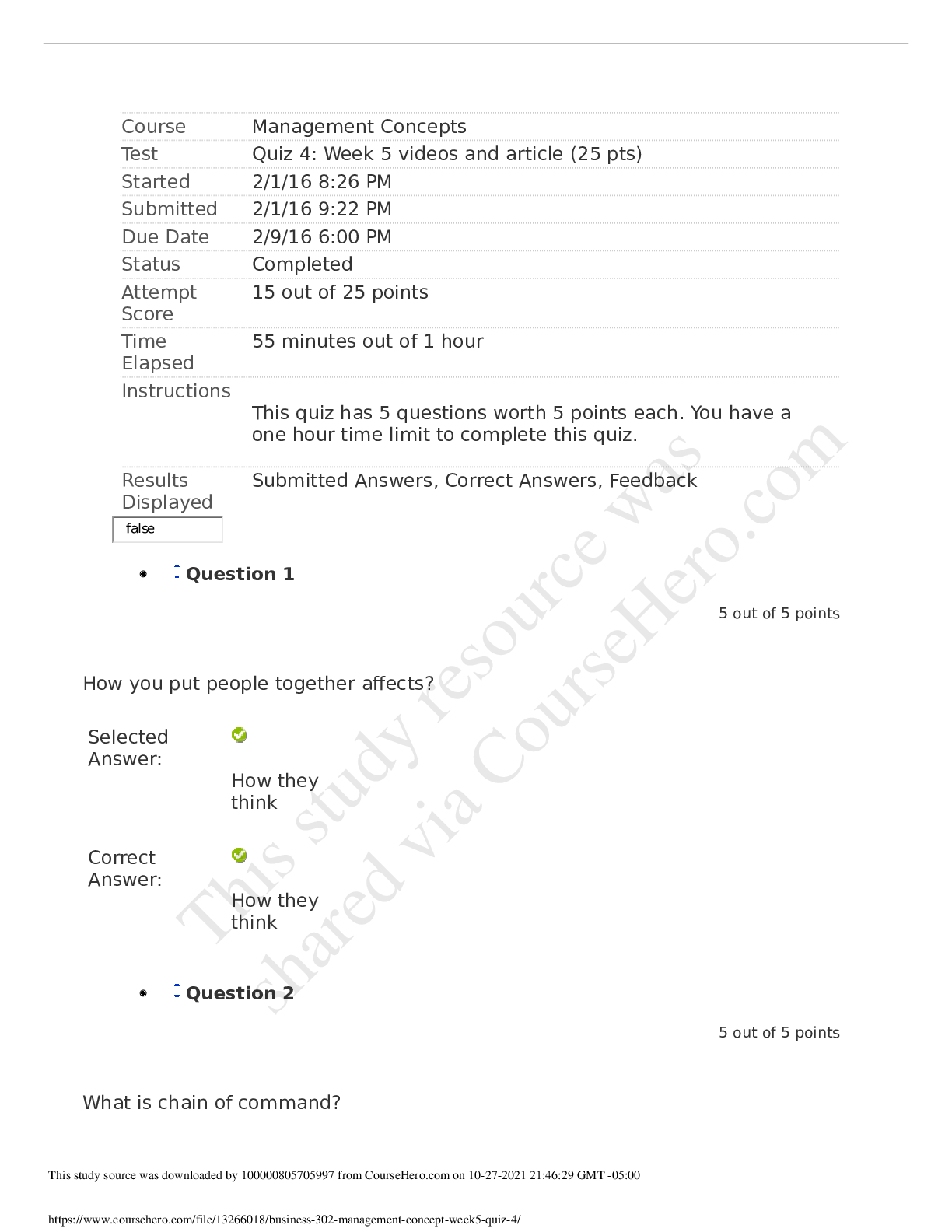


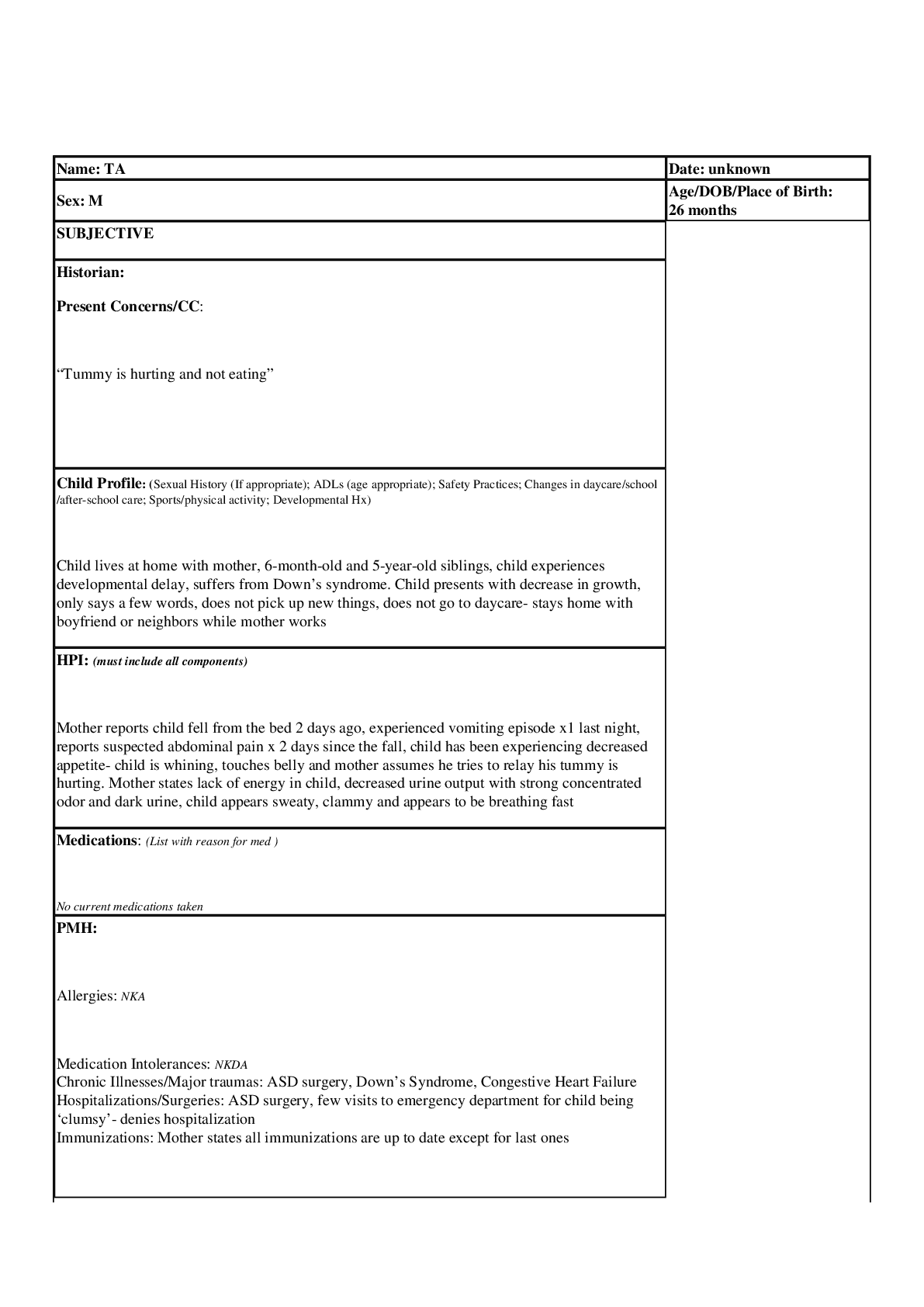

.png)

